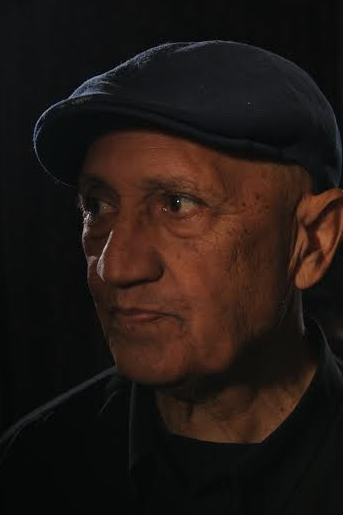Ronald Harrison
born 18 March 1940 – 28 June 2011, Cape Town, South Africa
Ronald Harrison was born in Athlone on the Cape Flats, but moved from place to place such as Kimberley, Ottery, District Six and Salt River. He loved art as a child and excelled at school. His mother and father used to do life modeling for him! Unfortunately, he wasn’t able to study art after school because of the colour of his skin. In spite of his talent as an artist, and his good grades in school, he could only support himself by working in a factory. He was frustrated by the lack of opportunities granted to him because of apartheid.
Harrison was a devout Christian, and he greatly admired the ANC leader, Chief Albert Luthuli. Luthuli was a Christian as well, and he advocated for peaceful resistance against the apartheid government because of his Christian values. Luthuli was banned multiple times throughout his political career. That means, he wasn’t able to attend political meetings, or speak out in public, or even have his face shown in media. Like Luthuli, Harrison believed that racial discrimination was unchristian. In 1959, Luthuli was banned for the third time. About a year after he was banned, the Sharpeville massacre took place, where 69 peaceful protestors were killed after they were shot at by police. After Sharpeville, the apartheid government banned the ANC and PAC. Harrison was horrified. Frustrated by the lack of his professional growth, and angered by the violence and brutality of the apartheid government, Harrison decided to use his art as a political tool. He started working on a painting, but his family didn’t know what he was busy with. When he finally revealed The Black Christ to them, they were astounded, but also scared. His mother warned him that he is going to get into a lot of trouble. That turned out to be an understatement.
The Black Christ was briefly exhibited in St Luke’s Anglican Church in Salt River, where it quickly gained the attention of the apartheid security police. The artwork was banned, and Harrison was arrested. The Dutch Reformed Church demanded that Luthuli publicly condemn the artwork’s portrayal of him as the Christ figure. Luthuli, of course, wasn’t able to, because he was still banned. The Black Christ was smuggled out of the country into the United Kingdom, to prevent it from being destroyed. The artwork toured across Europe, where it was used to raise millions of rands in legal funds for anti-apartheid activists awaiting trial. Meanwhile, Harrison suffered intense torture by the apartheid security forces. They believed that the artwork was part of a larger conspiracy by the anti-apartheid movement. The physical and psychological scars would haunt Harrison for the rest of his life.
After the painting toured Europe, it disappeared, and Harrison had no idea what happened to it. It was only after the fall of apartheid that the artwork was rediscovered, after an appeal in a newspaper. The Black Christ was discovered in the basement of a building in the UK, and returned to South Africa in 1997. It is currently in the collection of Iziko South African National gallery.
Like many people from his generation, Harrison didn’t speak of his suffering at the hands of police. He didn’t seek out recognition for his work, or vengeance for his treatment by security police, and is lovingly remembered by his friends and family. He didn’t publicly exhibit works again, however, he never stopped painting, and would gift art to the community.

